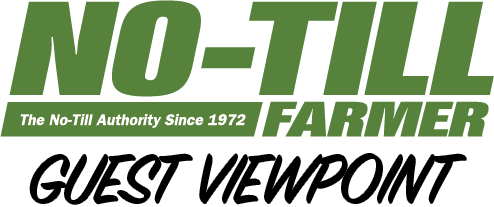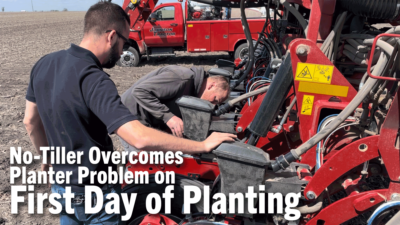Jim Boak of Salford Group shares his thoughts on No-Till Farmer editor Frank Lessiter’s column, “Light Tillage Not the Answer.”
Would we not be better off to get rid of the terms tillage and no till and talk about soil management?
Soil management includes all of the elements that influence profit-limiting factors and environmental factors as well. It is tough to make progress and actually think and act "out of the box" when we attach limiting terms to soil management functions.
Nutrient management through ideal placement of the correct product at the right time and at the optimum rate as outlined in the 4R Nutrient Management program is the guidebook to improving soil health and regenerating our soils. Nutrient management is critical to profit and environmental improvement. This does require some soil disturbance to do it right. Soil density, pest management and residue management and even seeding can be incorporated into the same operation.
Soil health has declined because of the practices of the past (including no-till) and it's long past time to put those limiting terms to bed and begin the process of soil regeneration. As my understanding of soil improves, I am not so sure any longer which is the most harmful: aggressive tillage, recreational tillage or chemicals?
Soil management tools have changed, our understanding of soil has changed. What soil is and how it works is no longer the "black hole" in our knowledge that is was 20 years ago. With our improved understanding of soil comes our improved understanding of how to use soil management tools. There are are tools and management techniques that exist today that are being limited in their adoption and use because the industry — and that means all of us — has viewed them as evil "tillage" tools.
We handcuff progress with limiting terms. Use corn as an example of how we get boxed in and limit our potential with terms science used to support the direction we took based on what was. Seed-to-soil contact (I bet 98% of our growers can not explain what that phrase really means), picket fence stands and photo copy plants.
Corn doesn't want to grow in rows. Corn is a grass. We wanted it to grow in rows because of the width of the engines we had available at the time, which where horse and oxen. Today the entire understanding and mechanics of corn are based on the width of horse and oxen. The religion of corn production has grown around the width of horse and oxen. Can you imagine how difficult it would be to erode soil in a solid stand corn field? How sad that we still grow it corn rows and have to contour plant or simply let the water and sun have a free shot at bare soil for much of the year.
Do we want our ability to regenerate soil health, improve our air and water quality because we boxed ourselves in with terms like tillage and no till?






Post a comment
Report Abusive Comment